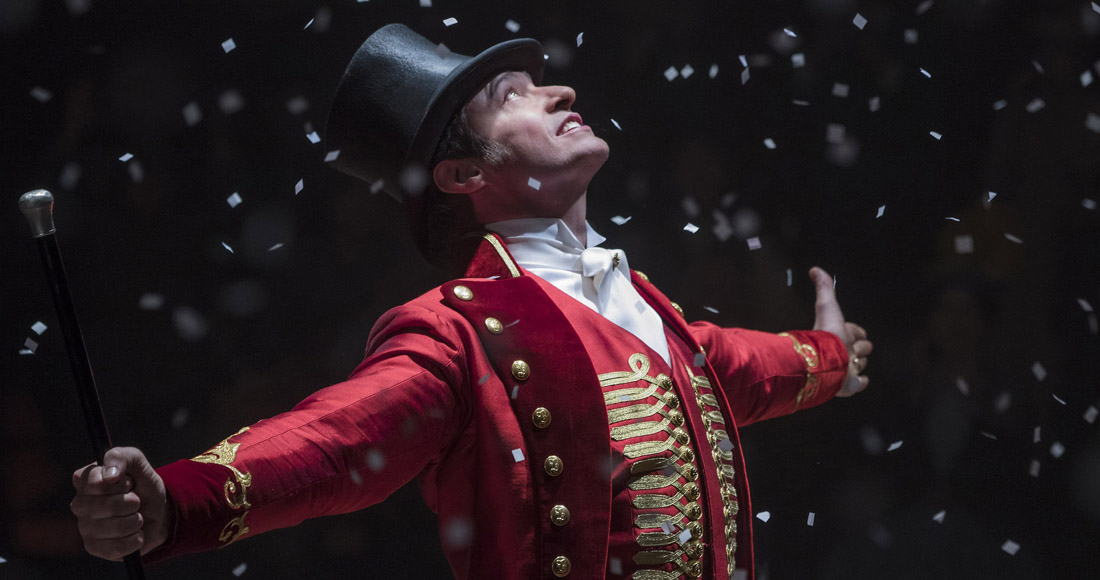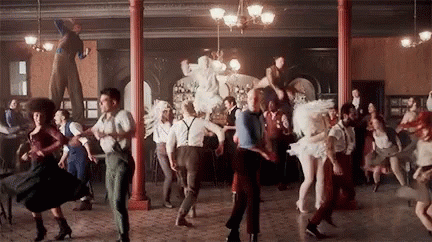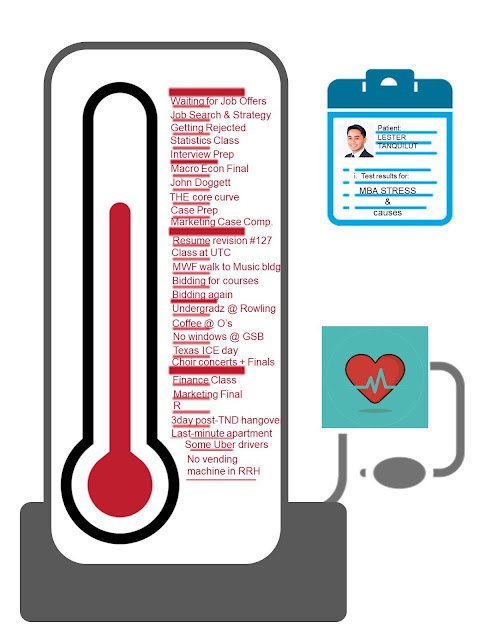As the semester comes to a close, I am (albeit required haha)
finding myself reflecting on the class from what now seems like a whirlwind of
a semester. I cannot help look back at
the time last semester when I was panicking on which classes to take. Then I quite quickly progressed to the next
level of panic by not getting some of the classes I intended because too many
people signed up for them. Alas, I got into
Design Thinking for Business Innovation.
Coming into the semester that is composed purely of
electives, I was very excited to be attending classes of my own choosing (and
of course, without the dread of the real-life struggle that was the Texas MBA
core). The first few sessions of Design
Thinking class were both refreshing and sometimes confusing. It was such a relief finding out that
majority of the approach needed to learn class did not involve regression
models of any sort. It felt like a new
way of approaching business problems and opportunities, although I feel like
before business school, that was more like how I engaged at work. But then there were times when I was missing
the highly quantitative view of things.
But after a few months and now looking back at the entire course, I feel
like it was great balance. A first year
friend of mine asked about this class as they were looking to take it next
year, and I found myself saying that I was happy to take this class because it
provided a well-needed balance in learning in my MBA curriculum. After going through highly quantitative and
case-based classes, I was glad to have taken one where I was able to activate
my creativity in looking at business problems again. And as we know, when we get out of business
school, it would do good to have a balanced approach to business problems.
Now, let me get to some specific takeaways from the course.
1. 1. Diverge.
Converge. Repeat. Over and over again.
One of the first concepts taught to us in class was the dynamic
duo that is divergent and convergent thinking.
I have found that these seemingly opposing approaches to ideating result
in highly diversified and robust options.
They become out-of-the-box, but not random. Ideas also become definite and sure, but not
limited. It has proven to be a highly
dynamic way of producing solutions. And
that was exactly what happened with my group project – the proposal for Austin
No Limits.
It was a very interesting project brief by KLRU. They were looking at ways to get new audiences
and donors. It was definitely not a
field that any of me and my groupmates had worked previously worked in, so the
brainstorming process was definitely a learning experience. As we familiarized ourselves with the brief,
the audience, the market, and the company, we allowed ourselves to contribute
with countless ideas (on what the problem was, who the market should be,
etc). There was a lot of divergent
thinking that happened. There were a lot
of ideas that came out, all of which sounded good. We then converged to make them come to life
during some of our deliverables. What’s
most interesting though is after all the divergent-convergent loops that we
went through, we finally converged on our main recommendation which is Austin No
Limits. Our convergent thinking from all
the ideas we had was so effective that all three of us were sold on the idea
and were sure that it was a great idea. This
was made possible by complementing mindsets and perspectives. As a group, we highlighted the strengths of each
individual’s thoughts and built on them.
We also identified the flaws in each person’s recommendation and suggested
new ones. Converging brought to life what
we think is a genuinely great idea for KLRU to pursue.
2. 2. Prototype anything. As in anything.
My background in CPG Marketing made me familiar with the
concept of prototyping. In my previous
job, I had worked closely with R&D and manufacturing facilities to come up
with dozens of versions for a detergent product. These versions were tested in a million
different ways – from technical specifications and delivery (height of suds,
how white fabric gets, how effective it removes stains, etc) to what the
consumer things about it (does it smell good, does it seem premium enough to
buy, etc). But at the end of it, I was
used to prototyping that was physical. Coming
to this class, I was sure there was a way to prototype non-physical products. I just never bothered thinking about it.
 Pursuing the Austin No Limits idea, our group immersed
ourselves in a new way of prototyping.
How do you prototype a multi-channel event? It was definitely an interesting experience
that required a lot of creativity but also attention to the smallest detail. Prototyping non-physical products were both
very similar and different to doing the same for physical items. It meant looking at technical specifications
(location, size of venue, number of audience, stage specs, timelines and
schedules, etc), appearance, presentation the user (or in this case, audience),
and so many others. In the end, what was
important is that we visualized what we were looking to do. Actually, let me rephrase that – we were able
to simulate what we wanted Austin No Limits… at least in our heads. And that’s how we knew what made it a good
idea, and what needed work.
Pursuing the Austin No Limits idea, our group immersed
ourselves in a new way of prototyping.
How do you prototype a multi-channel event? It was definitely an interesting experience
that required a lot of creativity but also attention to the smallest detail. Prototyping non-physical products were both
very similar and different to doing the same for physical items. It meant looking at technical specifications
(location, size of venue, number of audience, stage specs, timelines and
schedules, etc), appearance, presentation the user (or in this case, audience),
and so many others. In the end, what was
important is that we visualized what we were looking to do. Actually, let me rephrase that – we were able
to simulate what we wanted Austin No Limits… at least in our heads. And that’s how we knew what made it a good
idea, and what needed work.
3. 3. Should’ve. Would’ve. Could’ve.
As this project allowed me to explore a rather new side of
my brain when it comes to brainstorming and coming up with ideas, I did not
have any particular concept or topic that I thought was unnecessary. In fact, I felt like all the steps and parts
were needed. It was quite unfortunate realizing
this because interviewing people and getting insights became tedious at some point
given schedules. But it was all
needed. What might have helped better in
the learning process was an actual presentation to the client.
Our group put a lot of effort behind the ideas and
recommendations that we would have been so happy and proud to share them with
KLRU. Designing the deliverables with
the end in mind that we would show this to the client, and that there was huge
possibility for the to actually use it would have been a substantial
motivator. I imagine that it would also increase
the level of commitment and overall quality of work (not that we did not do
that yet). It would just have made the learning
experience more real and purposeful.
4. 4. Throwback
to real-world work environment
One of the things I have loved about being back to school is
the safe space it provides to students in the learning setting. We study concepts and cases. Our mistakes mean a lower grade, but will
probably not result in multi-million losses.
This group exercise, however, reminded me of how it felt like working with
teams in a real work setting. The difficulties
are similar, especially.
First, schedules never align. As in any workplace environment, we rarely have
enough time to meet, brainstorm, and do work together (so THANK YOU Google
Drive and Microsoft Office Online). But
we got to do what we got to do.
Next, timelines are never realistic. What’s realistic is the output that we can produce
and deliver given the timeline. During
the project, we first looked at interviewing several people, conducting focus
groups, and doing a day-in-the-life exercise.
Well, we know how that went!
If you work in marketing, it will never be 100%
numbers. Our marketing classes here help
us analyze problems with a set of data that we can turn into regression models
that consequently tell a story. We know
that’s not always the case. At work, we
sometimes have to look at alternative ways of brainstorming to analyze problems
and come up with stories and solutions.
Finally, ideas are not great unless they sell. Throughout the project, the process of
divergent and convergent thinking helped us come up with some amazing
ideas. We landed on Austin No Limits not
by accident, but because it was the idea that sold to us three. In the real world, storytelling is a tool and
skill that can make or break any idea, regardless of how strong it potentially
could be.



















